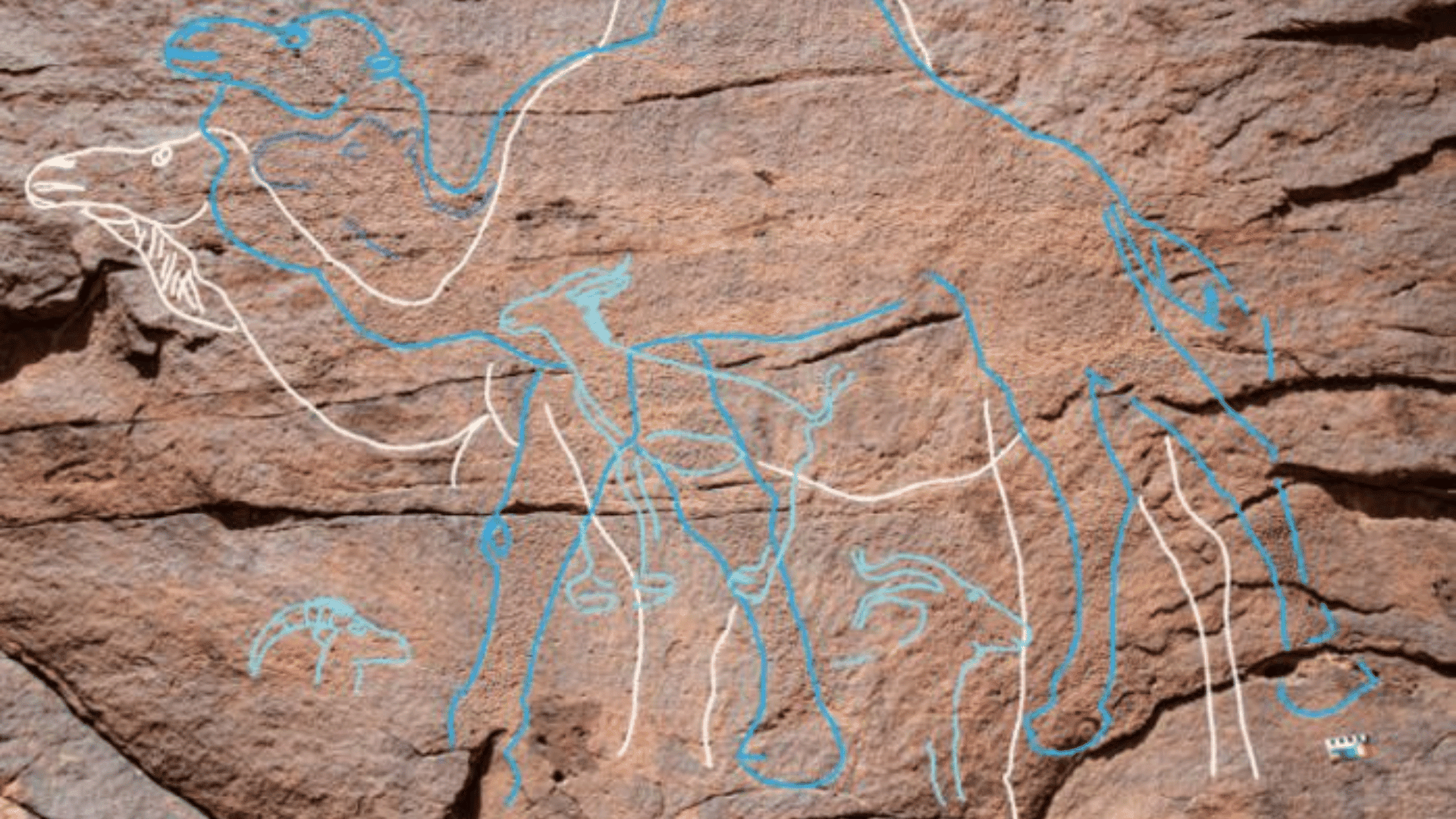An international team of archaeologists with the Green Arabia Project has unveiled a spectacular collection of rock art panels in northern Saudi Arabia. Researchers say the rock carvings shed new light on the ancient human groups who pioneered life in the Arabian interior after the Last Glacial Maximum (LGM).
The collaborative team included scholars from the Saudi Ministry of Culture’s Heritage Commission, the Max Planck Institute of Geoanthropology, University College London, Griffith University’s Australian Research Centre for Human Evolution (ARCHE), and other institutions.
The discoveries were made along the southern edge of the Nefud Desert at sites including Jebel Arnaan, Jebel Mleiha, and Jebel Misma. They comprise over 176 engravings across more than 60 panels. Dating back between 12,800 and 11,400 years ago, the art is notable for its sheer scale, featuring 130 life-sized and naturalistic figures of camels, ibex, equids, gazelles, and aurochs, with some figures measuring over 2 meters in height.
Rock Art Reveals Pioneer Culture in Post-Ice Age Arabia

The timing of the engravings corresponds to a period when seasonal water sources reappeared in the region, following extreme aridity, which enabled early human expansion. Lead author Dr. Maria Guagnin from the Max Planck Institute of Geoanthropology suggested the art served a deeper purpose than decoration.
She said, “These large engravings are not just rock art – they were probably statements of presence, access, and cultural identity.”
Co-lead author Dr. Ceri Shipton from University College London reinforced this concept.
Dr. Shipton said, “The rock art marks water sources and movement routes, possibly signifying territorial rights and intergenerational memory.”
Unlike previously known sites, the panels at Jebel Mleiha and Jebel Arnaan were etched onto towering cliff faces, some reaching heights of up to 39 meters. Researchers say the height emphasizes the extreme effort and significance placed on the imagery.
Artifacts found near the sites, such as Levantine-style stone points and dentalium beads, indicate long-distance connections to Pre-Pottery Neolithic populations in the Levant.
However, Dr. Faisal Al-Jibreen from the Saudi Ministry of Culture’s Heritage Commission says the content and placement of the Arabian engravings set them apart.
He said, “This unique form of symbolic expression belongs to a distinct cultural identity adapted to life in a challenging, arid environment.”







